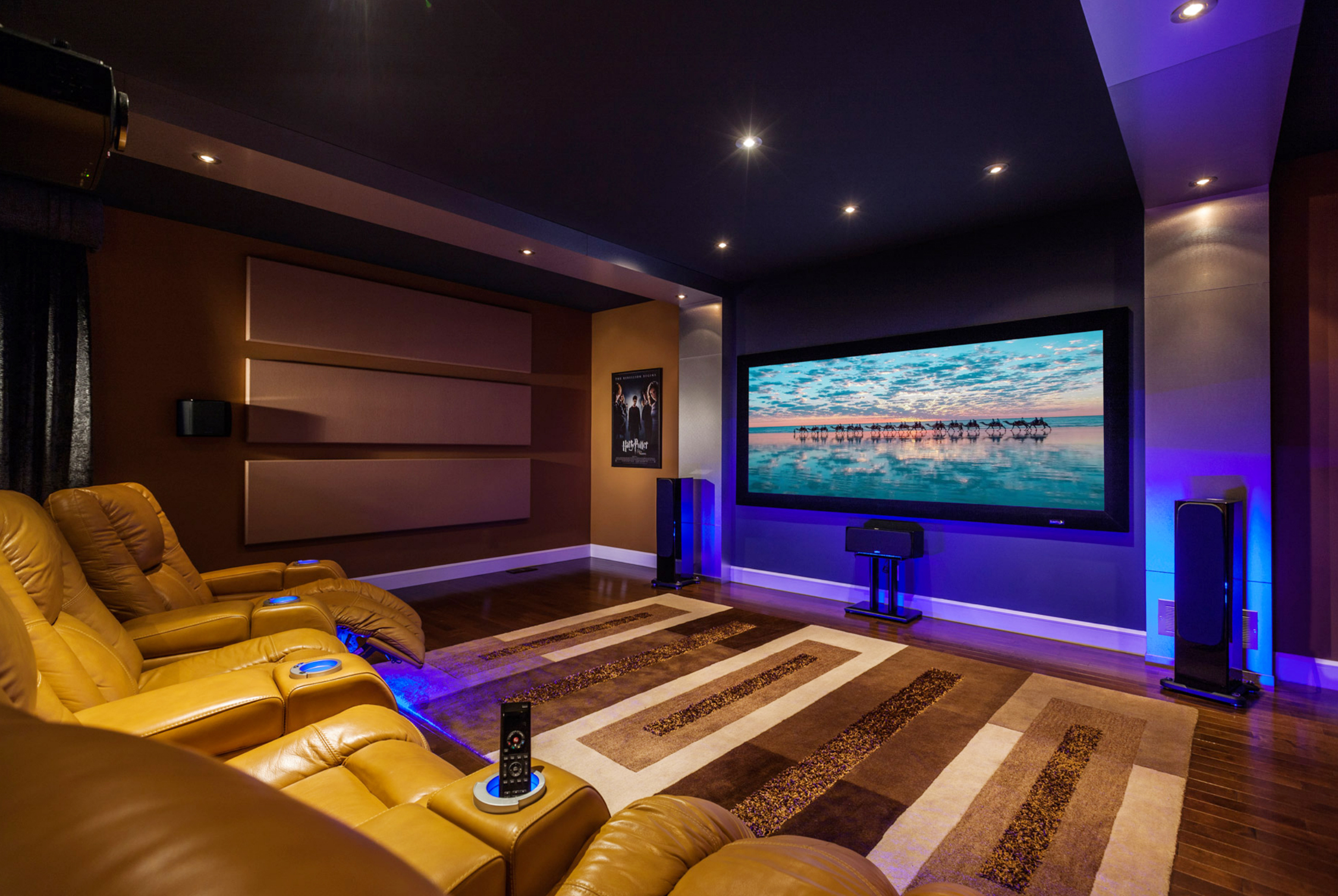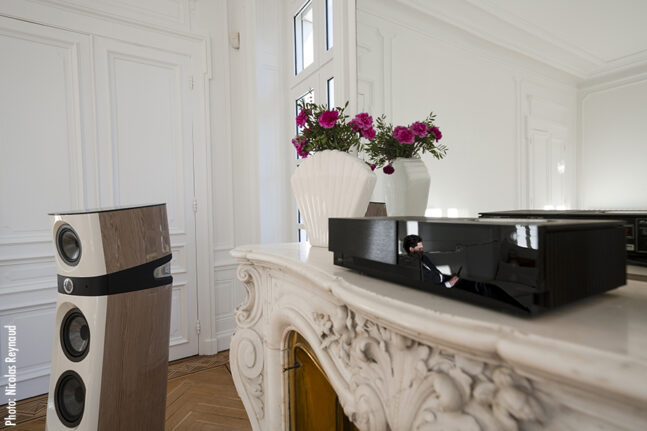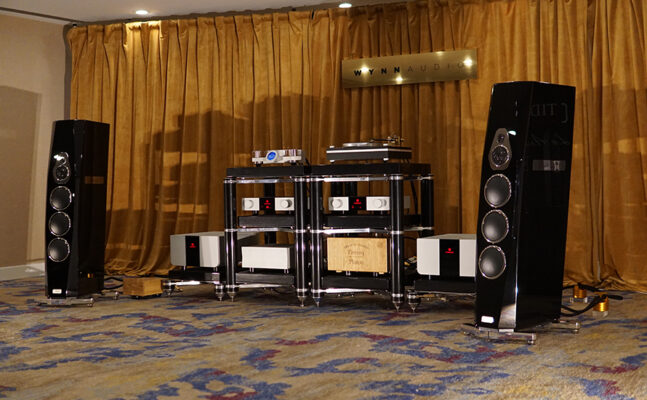It seems that most high-end audio people focus more on the electronic equipment than on what has the most influence on the end result — room acoustics. When I say room acoustics, it also includes the physical and electrical calibration of the equipment. Together it is a system, and when optimized, allows the equipment to perform at its full potential, and deliver a much greater experience.
Remember, the equipment cannot control the acoustics, and the acoustics does not care what kind of equipment you have. Remember also that DSP “room correction” is very limited, as it only alters the electrical signal feeding the loudspeakers. Once that signal leaves the speaker, it is a sound wave, whose energy is now at the mercy of the room’s acoustics.
How bad is the typical home theater or two channel listening room? Typically, bad enough that getting new equipment will have little to no bearing on improved performance. That is not to say that new equipment may make your system sound different, for better or worse, it is to say that the “fidelity” characteristics of the room will not be changed. The room has the same distortions interfering with fidelity.
Consider the following:
- Most audio listening rooms vary in frequency response by more than 20 dB SPL across the audible spectrum.
- Most audio listening rooms vary in reverberation times by more than 1 second across the audible spectrum.
Do you think a better amplifier or pre-amplifier would have any impact?
- Most audio listening rooms have an ambient noise floor of around 40 dB SPL.
- Most audio listening rooms have only about 60 dB of usable dynamic range.
- Most audio listening rooms have very audible early decay times.
- Most audio rooms have room modes that swing more than 20 dB SPL.
Maybe some new speakers will help?
- Most audio listening rooms have 1storder reflections within 10 dB of the direct signal.
- Most multi-channel audio systems are currently performing with calibration errors as bad as; channel ID incorrect, polarity on one channel reversed, a dead driver, polarity reversed on a driver, not to mention poor speaker / listening locations, positioning, alignment, etc.
Would investing in, say, an expensive power cable really be the smartest next move toward audio nirvana? It is silly to think that micro changes in electronics can be beneficial prior to addressing macro problems in the system.
The sound quality hierarchy is: set-up, calibration, acoustics, electronics. State-of-the-art equipment will not sound good in a poor environment- heck, mid-fi equipment in a good environment will beat it every time.
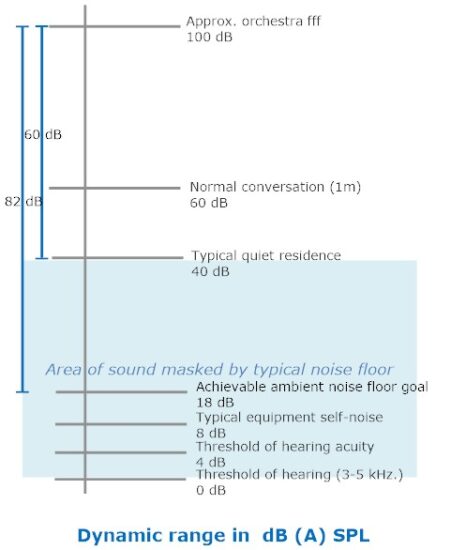
This graphic depicts the typical audio room noise floor and available dynamic range. Imagine all the low-level details that cannot be heard by the noisy environment.
The ambient noise floor consists of HVAC, appliance / equipment noise, plumbing, outside noise, etc. There are a number of things that can be done to prevent or mitigate these noises and distractions from covering up the low-level information. Often with music, and especially with movies, low-level information is critical to the story telling, offering clues and cues, and triggering emotions, offering suspense and relief, etc.
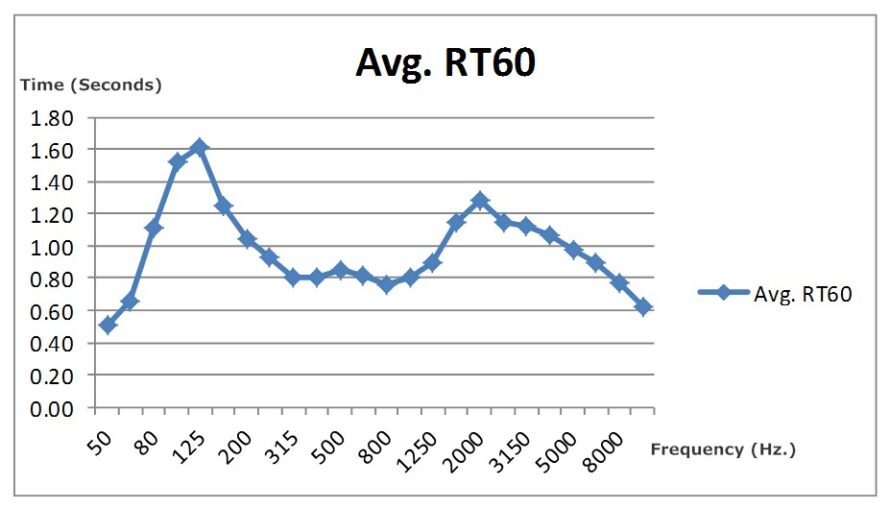
This graphic represents the average reverberation times of fifty audio rooms I worked on before acoustically treating. Do you think there might be speech intelligibility issues, poor imaging and spatial cues, buried low-level information, timbre errors, and inarticulations?
Reverberation times are pretty easy to address, even with existing rooms. It is common these days for rooms to consist of large, hard surfaces, which allow sound to bounce around and linger. Besides acoustic absorption panels, there are furnishings that can absorb sound energy, like curtains, carpet or area rugs, fabric covered chairs and sofas, etc. For rooms that are too dead, diffusers can be introduced to bring some life back, and / or make the room sound bigger.
In both cases, it is important to try to attenuate the first reflections of each speaker on each surface. Placing absorbers or diffusers in these locations will improve soundstage, timbre and spatial cues. Once this is controlled, address the remaining reverberation curve (time over frequency) until it is controlled for a linear response within a time window of about 0.25 second from 125 Hz. and up, with a slightly ascending decay rate below 125 Hz. This will offer the most neutral and pleasing sound
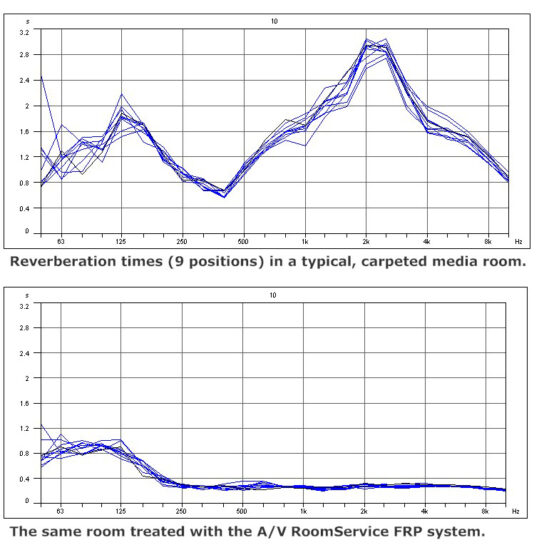
This graphic shows actual before and after acoustic treatment results of a media room. Notice that when the reverberation times are controlled that the sound does not vary as much seat to seat. This room was unusable, and now sounds outstanding.
What are we trying to achieve?
There are specific room acoustic goals to attain and in doing so mean peak equipment performance and enjoyment. The primary ones are:
Characteristic Avg. Audio Room Desired
Ambient Noise Foor 40 dBA 18 dBA
Dynamic Range 60 dB 82 dB
Reverberation Times Freq. varies > 1 sec varies < 0.4 sec.
Room Modes +/- 12 dB or > +/- 5 dB
Vibration isolation None > 90 % mitigated
In addition to elevating the performance to a much higher level than any new piece of equipment could do, acoustic control means neutrality and accuracy of the sound. Now you can judge equipment and recordings more faithfully. An accurate room is always a more enjoyable listening experience. Every room sounds unique, unless it is controlled.
How is this done?
We wil go into details in further articles, but the quick answer is the following steps:
- Understand the existing conditions. If existing construction, this is done with acoustic tests performed onsite. If new construction, the anticipated conditions must be estimated with computer modeling.
- Understand the desired conditions or goals.
- Computer model solutions (acoustical products) to get from the existing to the desired.
- Make and apply the recommendations.
- Test onsite to confirm or adjust the treatments.
Note that acoustic recommendations cannot be done without acoustic data. Room dimensions and layout alone does not include any of the fundamental acoustic characteristics we are trying to control. Without knowing the existing or estimated conditions, it is impossible to make recommendations. It is a specific prescription for specific and unique problems. Your room is different from everyone else’s, and it has different constraints. Only onsite tests or sophisticated computer modeling to estimate the conditions will give you workable data to formulate solutions. There is recent technology that allows customers to take an impulse response of the room and email me the WAV file. I can then look at the data from any combination of frequency, time, and energy domain I need. It will also capture the noise floor and many other attributes. This is about 75 % as good as me being there conducting tests myself, but for about half the cost.
I hope that reading this article has impressed upon you the importance of room acoustics over electronic equipment upgrades, and that there are means of organizing chaotic sound in a scientific manner. The course adjustments must be made before the fine. My last point to make is that typically, the cost of acoustic improvements is a fraction of equipment upgrades, and yet they will have many times greater sonic impact.

